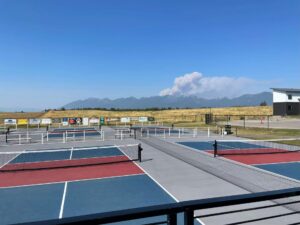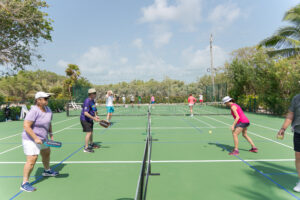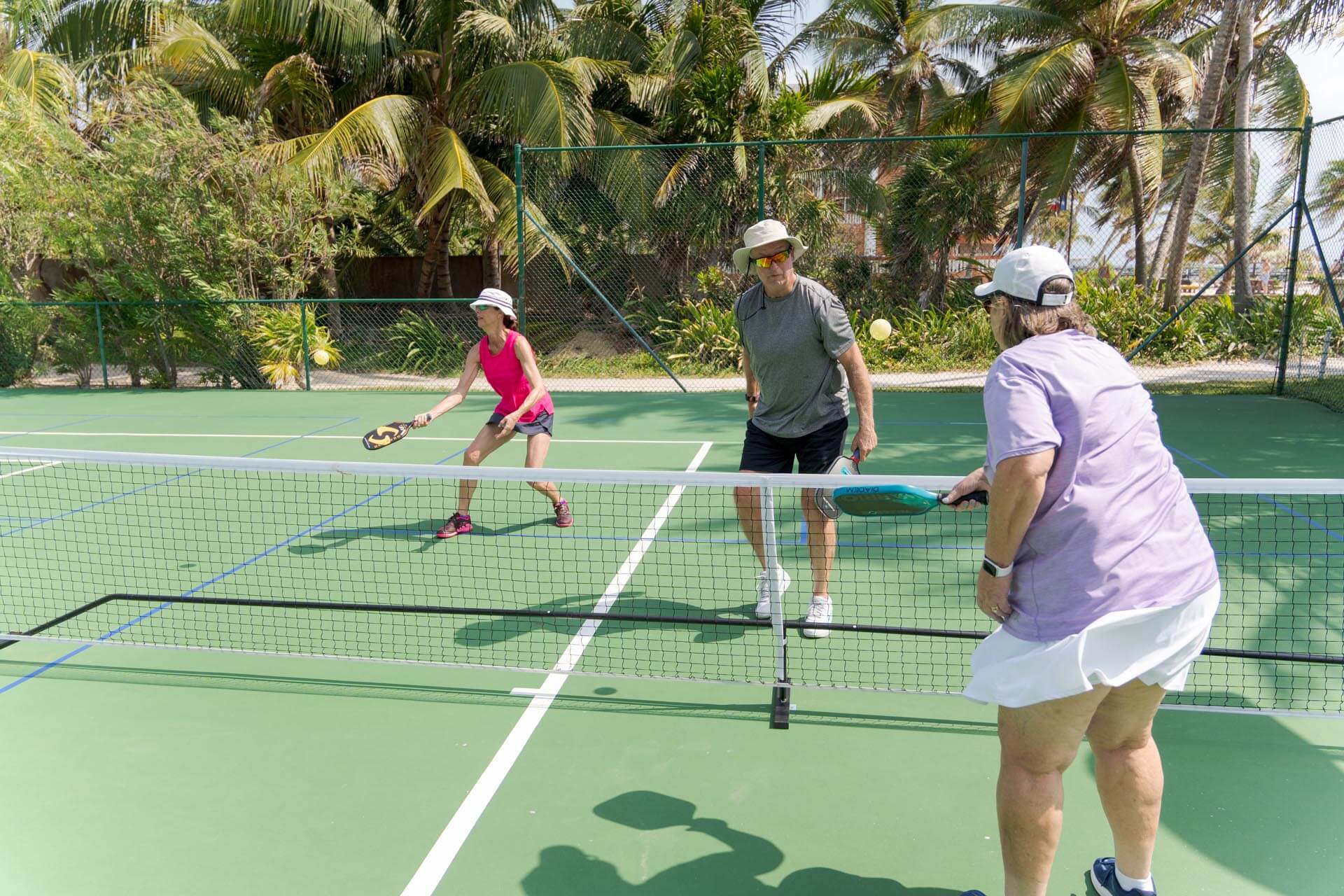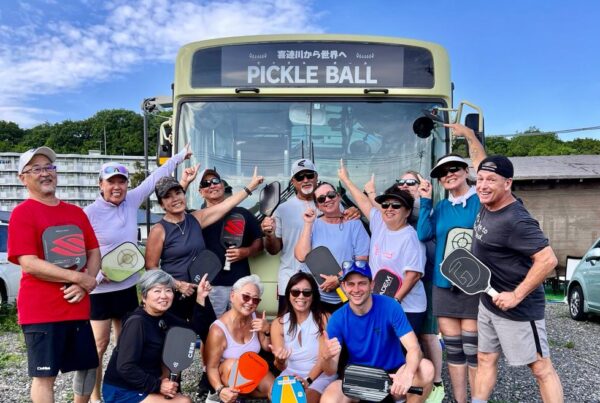Tennis and pickleball are two popular racquet sports with huge followings. So it isn’t surprising that there’s also a ton of people who bet on in through sites such as https://www.wsmcasino.com/. You may also consider playing link slot gacor and other casino games for a chance to win extra cash. However, pickleball has witnessed rapid growth in the United States in recent years. Here are five significant differences between tennis and pickleball and why pickleball is gaining so much popularity in the United States and the rest of the world.
1. Court Size and Equipment:
 One of the primary distinctions between tennis and pickleball is the court size and equipment used. Tennis is played on a much larger court, and singles is more popular. Pickleball is played on a smaller badminton-sized court measuring 44 feet in length and 20 feet in width, and doubles is more popular. Pickleball requires less space, meaning portable nets can be set up in driveways or backyards. Pickleball’s flexibility and size are two contributors to its rapid growth. The equipment used in both sports also differs, with tennis utilizing larger and heavier racquets with strings, whereas pickleball uses smaller, lighter paddles. Yet another crucial aspect of performing consistently is ensuring your equipment matches your playing style. Whether it’s choosing ergonomically designed tennis bags and grips selection or updating your accessories regularly, these details ensure your focus stays on the game rather than adjusting equipment. Upgrading even simple items can lead to a tangible improvement in both comfort and results on the court.
One of the primary distinctions between tennis and pickleball is the court size and equipment used. Tennis is played on a much larger court, and singles is more popular. Pickleball is played on a smaller badminton-sized court measuring 44 feet in length and 20 feet in width, and doubles is more popular. Pickleball requires less space, meaning portable nets can be set up in driveways or backyards. Pickleball’s flexibility and size are two contributors to its rapid growth. The equipment used in both sports also differs, with tennis utilizing larger and heavier racquets with strings, whereas pickleball uses smaller, lighter paddles. Yet another crucial aspect of performing consistently is ensuring your equipment matches your playing style. Whether it’s choosing ergonomically designed tennis bags and grips selection or updating your accessories regularly, these details ensure your focus stays on the game rather than adjusting equipment. Upgrading even simple items can lead to a tangible improvement in both comfort and results on the court.
2. Speed and Intensity:
Tennis is known for its high-intensity rallies and powerful shots, especially professionally. Tennis demands significant physical exertion and endurance. In contrast, pickleball typically offers a more leisurely pace, making it accessible to a broader range of age groups and fitness levels. The lighter ball and smaller court make pickleball a game emphasizing strategy, agility, reflexes, and finesse rather than raw power. This lower physical demand makes it an appealing option for older adults seeking a less strenuous but engaging sport.
3. Accessibility and Learning Curve:
Tennis has a steeper learning curve due to its complex rules, varied strokes, and larger court size. Mastering tennis techniques can take considerable time and effort, especially for older adults or people without a sports background. However, with its simplified rules and shorter learning curve, pickleball allows beginners to quickly grasp the fundamentals and actively participate in matches. Most players learning pickleball can play a game on the same day. The smaller court size facilitates easier movement and shots, making pickleball more accessible and fun to novices, creating an inclusive environment.
4. Social and Community Aspects:
Pickleball has also gained popularity due to its strong social and community-oriented nature. Tennis, traditionally more individual-focused, often involves singles matches requiring fewer player interactions. Tennis players typically only practice with the same players for the entire session. Pickleball, conversely, is predominantly a doubles game that fosters teamwork and encourages social engagement between and during matches. The sport appeals to people of all skill levels, promoting an atmosphere of camaraderie, friendship, and inclusivity. Many pickleball clubs and communities have emerged across the United States, offering convenient access to recreational play, leagues, and tournaments for players of all ages.
requiring fewer player interactions. Tennis players typically only practice with the same players for the entire session. Pickleball, conversely, is predominantly a doubles game that fosters teamwork and encourages social engagement between and during matches. The sport appeals to people of all skill levels, promoting an atmosphere of camaraderie, friendship, and inclusivity. Many pickleball clubs and communities have emerged across the United States, offering convenient access to recreational play, leagues, and tournaments for players of all ages.
5. Versatility and Adaptability:
Pickleball can be played in various settings, including indoor and outdoor courts. Its adaptability has contributed to its growing popularity in the United States as it provides more flexibility in finding suitable playing locations. Furthermore, pickleball is enjoyed by players of all ages, making it a popular choice for families, schools, retirement communities, and recreational centers. Its smaller court size, reduced physical demand, and simplified rules make pickleball an ideal sport for young and older adults looking to stay active and enjoy competition.
In summary, the growing popularity of pickleball in the United States can be attributed to its distinct characteristics and advantages. With its smaller court size, lighter equipment, less demanding physicality, inclusive nature, social aspects, and adaptability, pickleball has captured the attention of a wider audience. As more people discover the joy of pickleball, its momentum shows no signs of slowing down. Tennis and pickleball will have to coexist in the future. Whether a tennis enthusiast or seeking a new recreational activity, try pickleball and experience its unique blend of fun, camaraderie, and competitive spirit.




